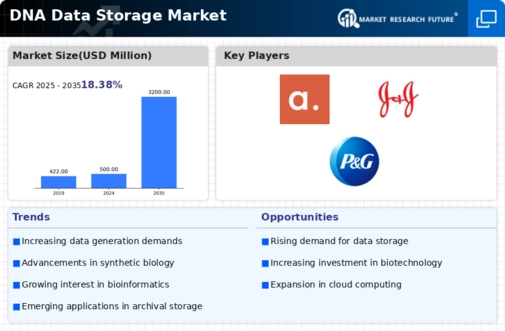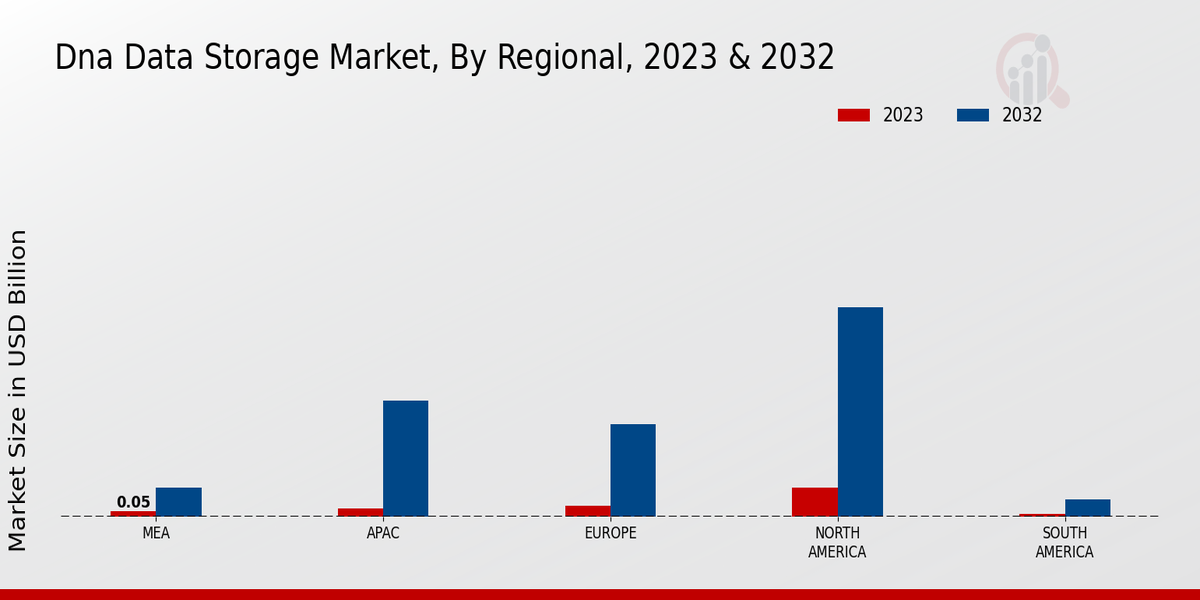Market Growth Charts
Rising Data Generation
The exponential growth of data generation across various sectors is a primary driver for the Global DNA Data Storage Market Industry. As organizations increasingly rely on data-driven decision-making, the volume of data produced is projected to reach 175 zettabytes by 2025. This surge necessitates innovative storage solutions, as traditional methods struggle to keep pace. DNA data storage, with its potential to store vast amounts of information in a compact form, emerges as a viable alternative. By 2024, the market is valued at 500 USD Million, indicating a growing recognition of DNA as a sustainable storage medium.
Sustainability Concerns
Environmental sustainability is becoming a critical consideration in technology adoption, influencing the Global DNA Data Storage Market Industry. Traditional data storage methods, such as magnetic and optical storage, consume significant energy and resources. In contrast, DNA data storage offers a more sustainable solution, potentially reducing the carbon footprint associated with data centers. As organizations strive to meet sustainability goals, the appeal of DNA storage, which utilizes biological materials, is likely to increase. This shift aligns with global efforts to combat climate change and could drive market growth significantly in the coming years.
Market Growth Projections
The Global DNA Data Storage Market Industry is poised for substantial growth, with projections indicating a market value of 3200 USD Million by 2035. This growth trajectory, characterized by a compound annual growth rate (CAGR) of 18.38% from 2025 to 2035, reflects the increasing recognition of DNA as a viable data storage medium. Factors contributing to this growth include rising data generation, advancements in biotechnology, and the need for sustainable storage solutions. As organizations increasingly adopt DNA storage technologies, the market is likely to expand, offering new opportunities for innovation and investment.
Technological Advancements
Ongoing advancements in biotechnology and molecular engineering are propelling the Global DNA Data Storage Market Industry forward. Innovations in DNA synthesis and sequencing technologies have enhanced the efficiency and cost-effectiveness of DNA data storage solutions. For instance, recent developments have reduced the cost of DNA synthesis to approximately 0.01 USD per base pair, making it more accessible for data storage applications. As these technologies continue to evolve, they are expected to further lower costs and improve data retrieval speeds, thereby attracting more organizations to adopt DNA storage solutions.
Increasing Demand for Long-term Data Preservation
The need for long-term data preservation is a significant driver for the Global DNA Data Storage Market Industry. With the increasing reliance on historical data for research, compliance, and decision-making, organizations require storage solutions that ensure data integrity over extended periods. DNA storage offers remarkable stability, with the potential to preserve data for thousands of years without degradation. This characteristic is particularly appealing to sectors such as healthcare and scientific research, where data longevity is paramount. As the market matures, the demand for reliable long-term storage solutions is expected to escalate.





